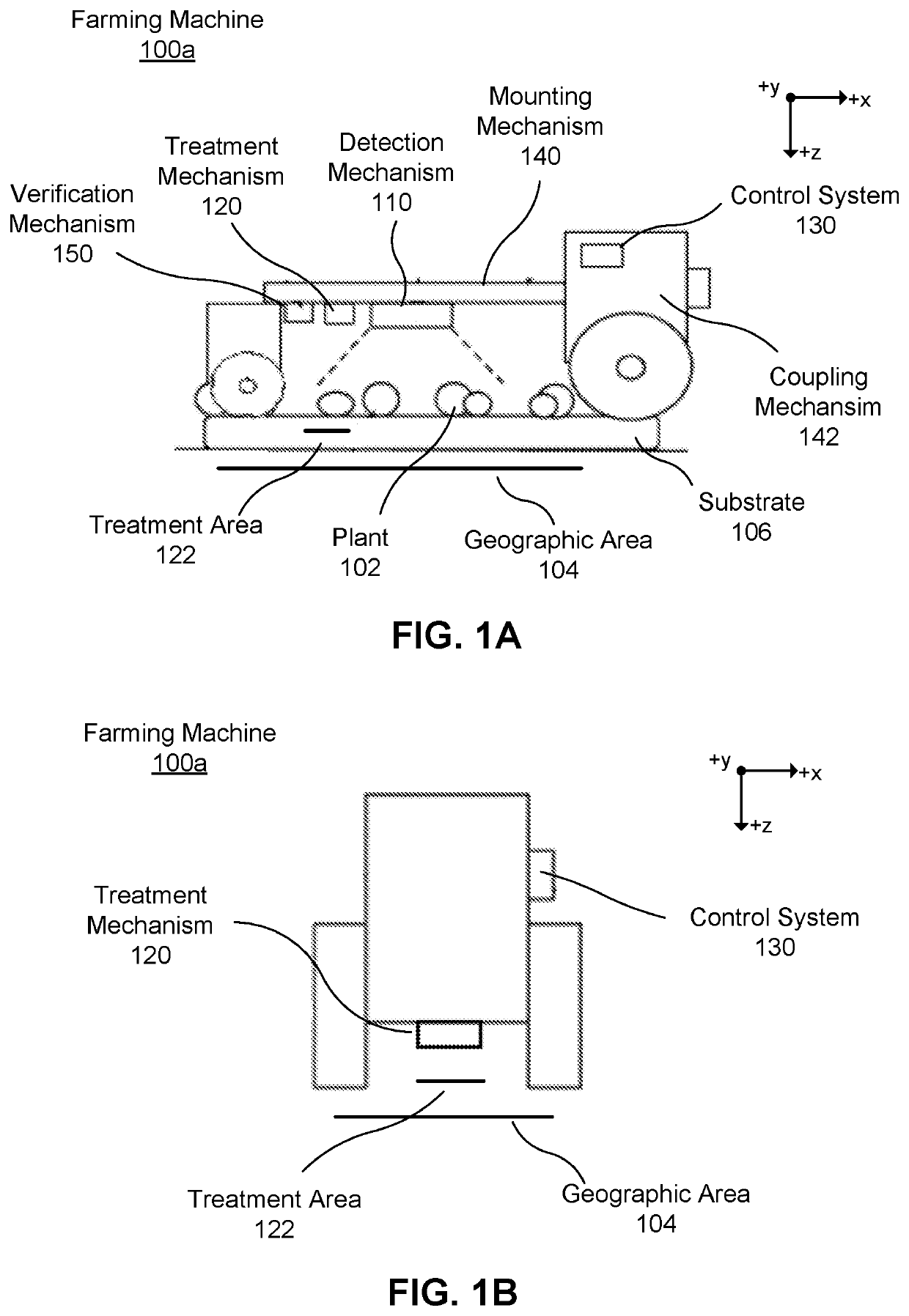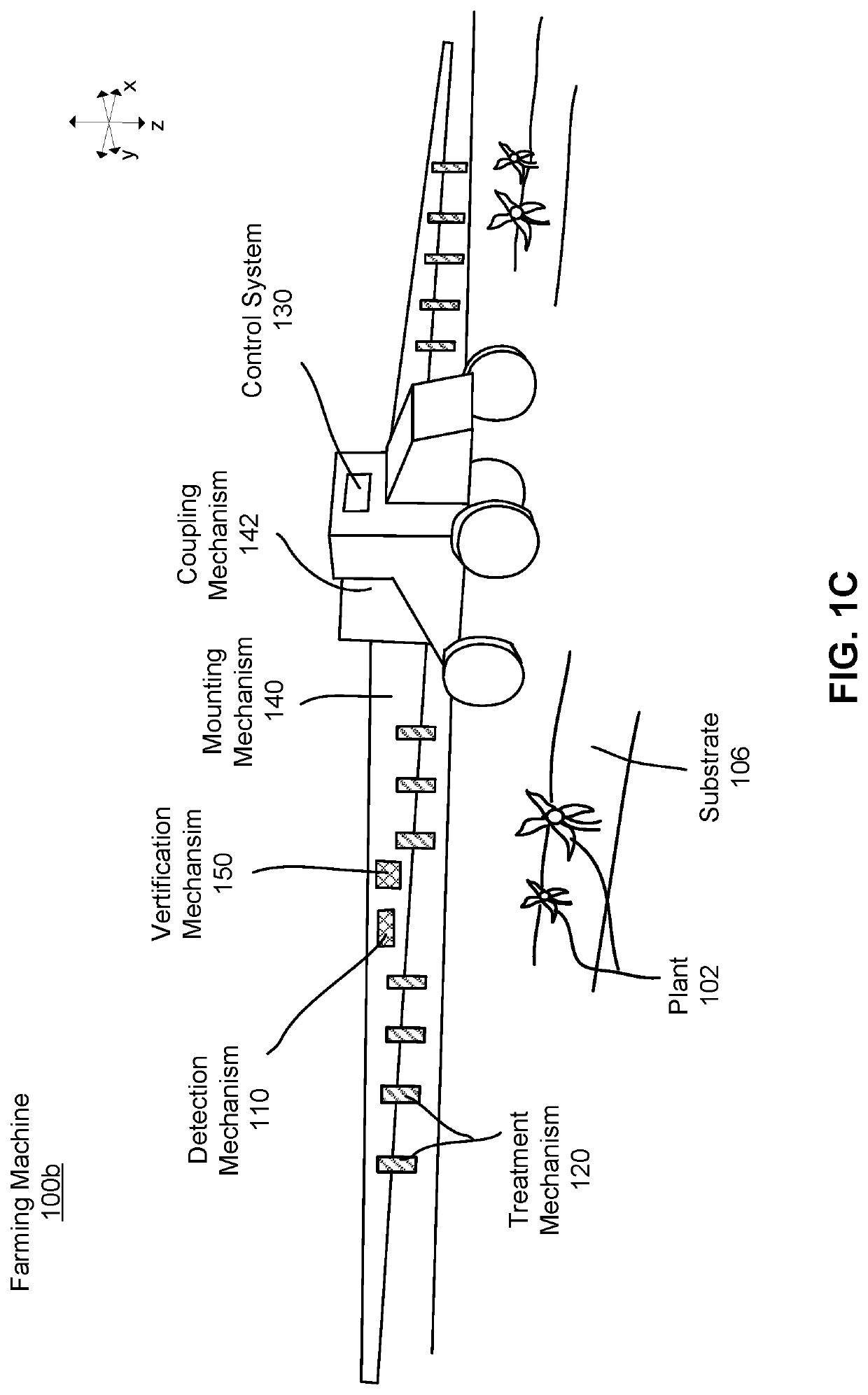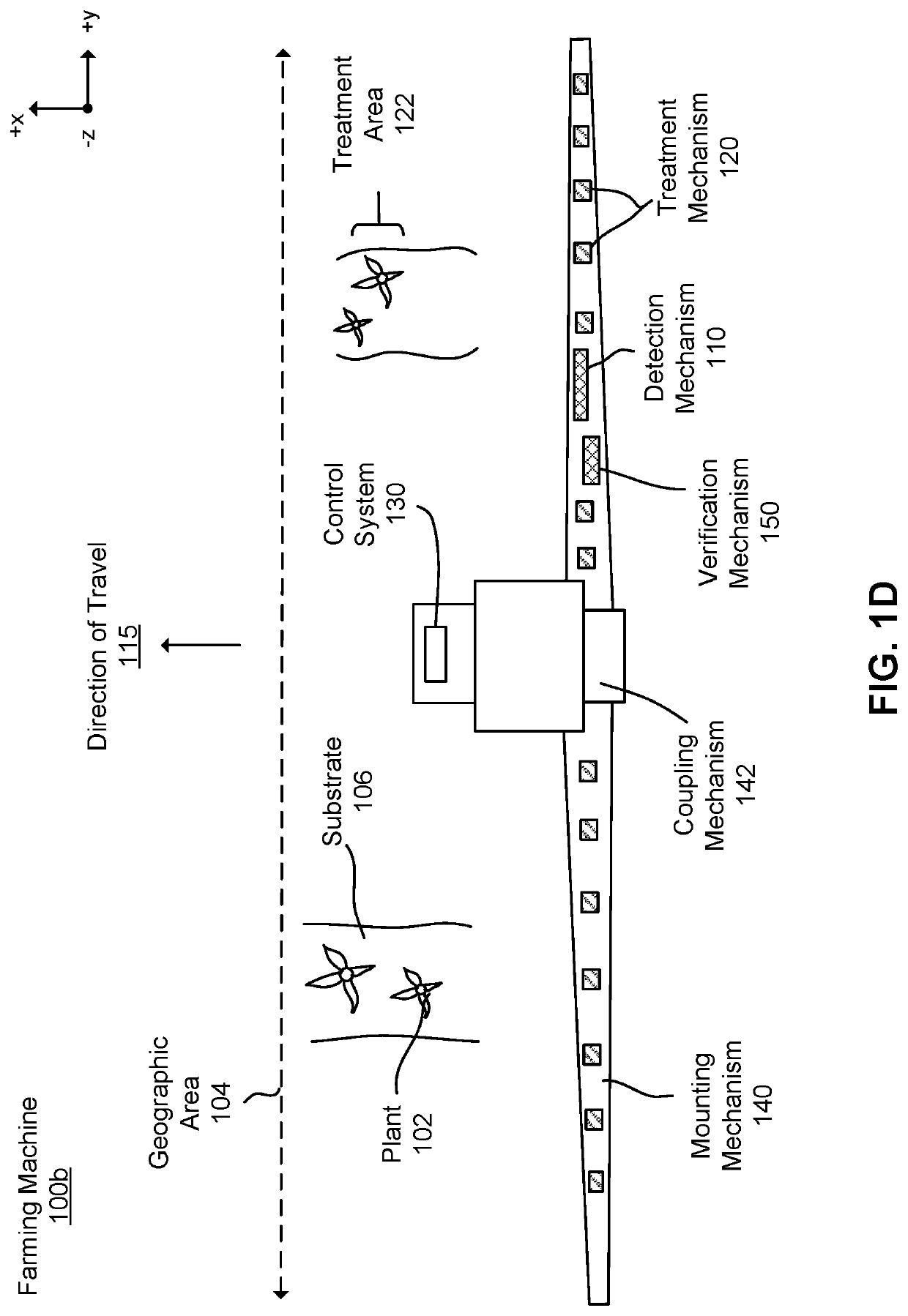Ground Plane Compensation in Identifying and Treating Plants
a compensation and plant technology, applied in the field of depth information, can solve the problems of difficult to accurately identify and treat individual plants in a field rather than large areas of the field, prove labor-intensive and costly when performed at industrial scale, and many of these systems are limited in their ability to properly identify and treat individual plants. , to achieve the effect of high fidelity in treating
- Summary
- Abstract
- Description
- Claims
- Application Information
AI Technical Summary
Benefits of technology
Problems solved by technology
Method used
Image
Examples
status example
Physiological Status Example
[0192]The control system 130 can determine a physiological status (e.g., a value quantifying the status) for a plant represented by a plant cluster as a feature value. Here, the physiological status may be any of a growth stage, a flowering stage, a measure of plant health, a quantification of plant phytochemistry, a quantification of chlorophyll levels, a quantification of plant nutrition, or any physiological status that can indicate plant treatment. The control system 130 may apply any number of functions in determining the physiological status of a plant represented by the plant cluster. For example, the plant cluster may have shape and / or size indicating a specific growth stage or plant health, or may have a color in the accessed image indicating a chlorophyll level and / or plant nutrition, etc. Whatever the case, the control system 130 can analyze the points in the point cloud to determine characteristics of the points in the plant cluster to determi...
PUM
 Login to View More
Login to View More Abstract
Description
Claims
Application Information
 Login to View More
Login to View More - R&D
- Intellectual Property
- Life Sciences
- Materials
- Tech Scout
- Unparalleled Data Quality
- Higher Quality Content
- 60% Fewer Hallucinations
Browse by: Latest US Patents, China's latest patents, Technical Efficacy Thesaurus, Application Domain, Technology Topic, Popular Technical Reports.
© 2025 PatSnap. All rights reserved.Legal|Privacy policy|Modern Slavery Act Transparency Statement|Sitemap|About US| Contact US: help@patsnap.com



